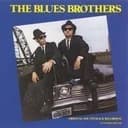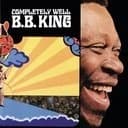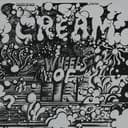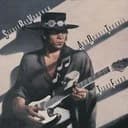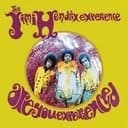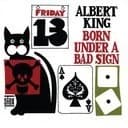The B Blues Scale occupies a particularly significant place in guitar music due to the key of B's natural resonance on the instrument and its prevalence in rock and blues repertoire. The scale's six notes (B-D-E-F-F♯-A) create a compact yet expressive palette that enables musicians to convey profound emotion through minimal melodic material. The blue note—F natural—sits directly between the perfect fourth (E) and perfect fifth (F♯), creating a tritone relationship with the root that generates harmonic tension begging for resolution. This ambiguous pitch reflects the African-American musical tradition of "worrying" or bending notes, a vocal technique adapted to instruments that cannot exist within the rigid boundaries of Western equal temperament. When performing the B blues scale, experienced musicians often manipulate the F natural through bending, sliding, or vibrato techniques to access the microtonal space between pitches, achieving the vocal quality that separates authentic blues expression from mere technical execution. This approach to pitch flexibility connects modern blues guitarists directly to the field hollers, work songs, and spirituals of the 19th century Deep South.
Playing Blues in the Key of B
The B Blues Scale excels in improvisation over blues progressions in B, particularly suited to guitar because the key sits comfortably across all six strings and allows for powerful open string bends and vibrato techniques. The scale works universally over all three chords in a 12-bar blues progression (B7-E7-B7-F♯7-E7-B7), eliminating the need for complex scale-per-chord thinking that beginners often find intimidating. When soloing, focus on the blue note (F natural) as your primary expressive device—approach it chromatically from either E or F♯, and bend into or away from it to create the crying, vocal-like phrases that define blues guitar language. Rhythmic phrasing proves equally important: employ triplet subdivisions, syncopated accents, and call-and-response patterns that mirror conversational speech patterns. The B blues scale also functions effectively in rock contexts over power chord progressions and in jazz-blues settings where dominant seventh harmony predominates. For advanced applications, layer the blues scale with B Minor Pentatonic or the Mixolydian mode to expand your improvisational vocabulary while maintaining blues authenticity.
Understanding the Blue Note
The defining characteristic of the B Blues Scale—its blue note, F natural—represents more than simply a chromatic passing tone between scale degrees. This ♭5 interval creates a diminished fifth (tritone) against the root B, historically called "diabolus in musica" (devil in music) in medieval European theory due to its dissonant, unsettling quality. Blues musicians embraced this forbidden interval, transforming it into a powerful tool for emotional expression that suggests longing, tension, and unresolved yearning. In practice, the F natural rarely sounds as a static pitch; instead, it functions as a target for bends from E (perfect fourth) or a release point resolving to F♯ (perfect fifth). This fluid approach to the blue note reflects the scale's African heritage, where pitch exists on a continuum rather than fixed points on a keyboard. When you hear classic blues guitarists "bend the blue note," they're accessing quarter-tone and microtonal inflections that Western notation cannot accurately represent. The result is a deeply human, vocal quality that communicates emotion more directly than any perfectly-tuned melodic line could achieve. Master this technique by singing blues phrases first, then translating that vocal flexibility to your instrument.
B Blues Scale Across Musical Styles
While rooted in traditional blues music, the B Blues Scale has migrated into virtually every contemporary popular music genre, from hard rock and heavy metal to funk, soul, and modern R&B. Rock guitarists favor the key of B for its powerful, guitar-friendly voicings and the dramatic effect of bending strings into the blue note—techniques showcased in countless classic rock solos. Blues-rock pioneers like Eric Clapton, Jimmy Page, and Jimi Hendrix built their improvisational approaches around blues scales in B, E, and A, creating a template that millions of guitarists have followed. In jazz contexts, the blues scale provides a simplified framework for navigating dominant seventh chord progressions, allowing musicians to create cohesive melodic statements over changing harmony. Contemporary artists continue discovering new applications: John Mayer incorporates blues scale vocabulary into pop-influenced arrangements, while blues revivalists like Gary Clark Jr. and Joe Bonamassa demonstrate the scale's ongoing relevance to traditional forms. Even hip-hop producers sample blues-based guitar licks and riffs, ensuring the B blues scale's musical DNA continues influencing new generations. Learning this scale connects you to over a century of American musical innovation and provides immediately applicable tools for improvisation across multiple genres.
Practice Strategies and Applications
Effective practice with the B Blues Scale requires moving beyond mechanical scale runs toward musical phrasing and authentic blues expression. Begin by internalizing the scale's sound: play it slowly, singing each note as you play, until the intervals become part of your musical vocabulary. Practice blues licks and phrases from recordings rather than abstract patterns—transcribe short motifs from B.B. King, Albert King, or Stevie Ray Vaughan, analyzing how they approach and resolve the blue note. Develop your ear by improvising over simple 12-bar blues backing tracks, focusing on space, dynamics, and rhythmic variation rather than constant stream-of-notes soloing. The blues scale's power lies in what you don't play as much as what you do—master the art of tension and release, playing phrases that breathe and respond to the underlying harmony. Experiment with different registers and positions on your instrument, as the same scale produces dramatically different emotional qualities when played in lower versus higher octaves. Combine the blues scale with chord tones, targeting the root, third, and seventh of each chord in a progression to create melodically coherent solos. Finally, remember that blues is fundamentally about emotional communication: technical facility means nothing without the ability to tell a story and move listeners through your musical choices.
